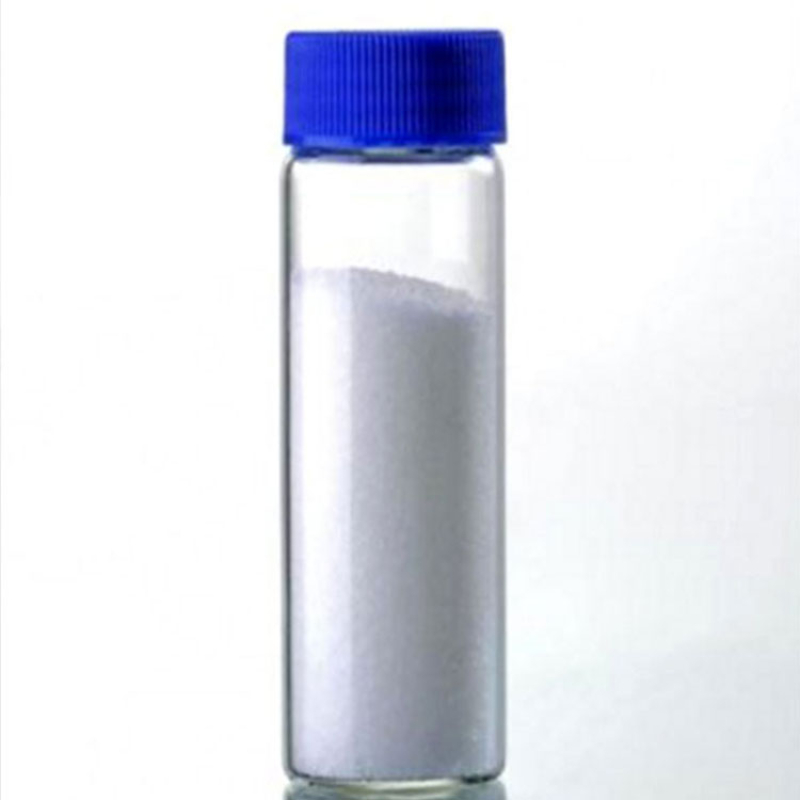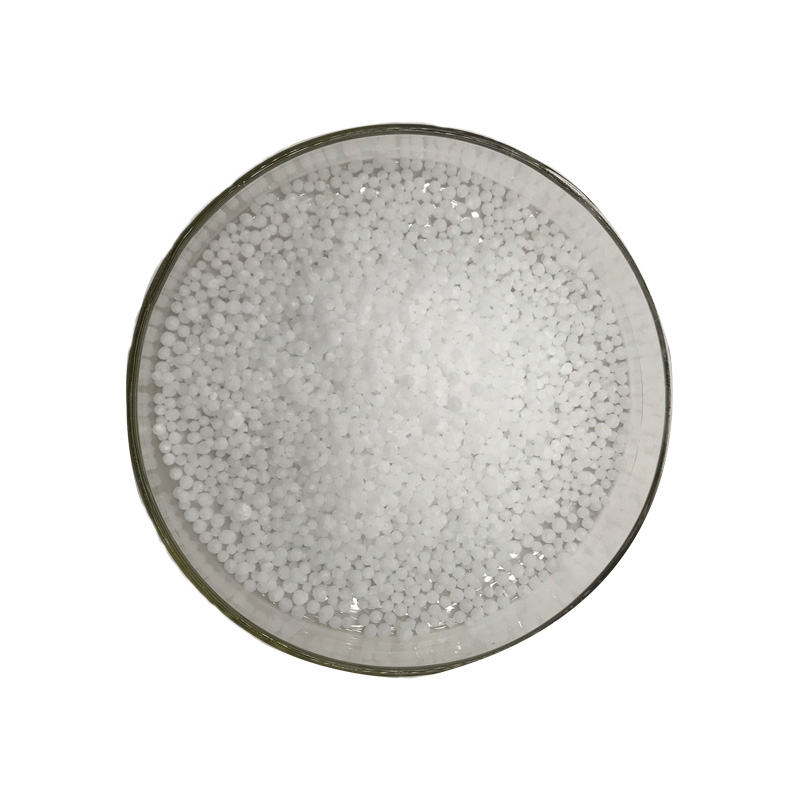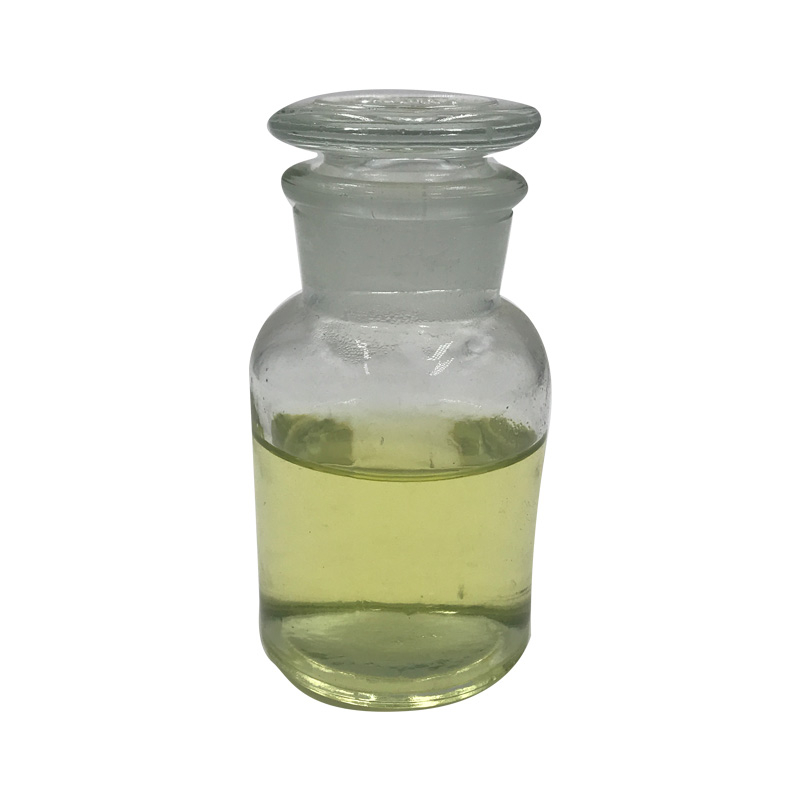Products Description of Diphenyl Ether CAS#101-84-8Diphenyl Ether (CAS#101-84-8) is a colorless crystalline solid or liquid with a mild, pleasant aroma. It is characterized by its colorless appearance and melts at a point around 81 °F (27.2 °C). When the temperature exceeds this melting point, it transforms into a colorless liquid. Diphenyl Ether is known for its distinct, strong floral-green, metallic geranium-like scent and is insoluble in water.This chemical is widely used as a heat transfer medium due to its thermal stability and low vapor pressure.
Contacta ahora
Products Description of Dibenzoylmethane CAS#120-46-71,3-diphenyl-1,3-propanedione is commonly known as dibenzoylmethane.
Contacta ahora
Products Description of Glycerol triglycidyl ether CAS#13236-02-7Glycidyl ethers include allyloxyepoxypropane, diglycidyl ether, isopropyl glycidyl ether, butoxye-popropane, diglyeidyl ether (EP-562) and epoxphenoxypropane, etc. They are a group of substances with similar chemical properties and toxic effects. They are colorless liquids with some pungent odors. They have low acute toxicity when in contact with the mouth and skin, and moderate toxicity when in contact with the respiratory tract. They mainly act on the nervous system.
Contacta ahora
Products Description of Neopentyl glycol diglycidyl ether CAS#17557-23-2Slightly yellow transparent liquid. Soluble in organic solvents such as ketone and benzene.
Contacta ahora
Products Description of Bisphenol-A bis CAS#5945-33-5Bisphenol A Bis(diphenyl phosphate) is a flame retardant.
Contacta ahora
Products Description of Isosorbide dimethyl ether CAS#5306-85-4 Isosorbide dimethyl ether is a colorless oily liquid. It is very stable under neutral conditions, hygroscopic, and miscible with many organic solvents. It is often used as a solvent. DMI can promote the penetration of active ingredients into the epidermis of the skin and give full play to the effectiveness of active ingredients.
Contacta ahora
Products Description of Diisopropyl Ether (99%min) CAS#108-20-3Diisopropyl ether is a good solvent for animal, vegetable and mineral oils and fats, and can be used to extract nicotine from tobacco. It is also a good solvent for paraffin and resin. In industry, diisopropyl ether is often mixed with other solvents and applied to paraffin-based oils. The dewaxing process of the product. As a solvent, it is also used in pharmaceuticals, smokeless gunpowder chemical books, coatings and paint cleaning, etc.
Contacta ahora
Products Description of Diphenylacetonitrile CAS#86-29-3The molecular formula of diphenyl acetonitrile is C14H11N, and its melting point is 71-73°C. Boiling point 181 °C (12 mmHg). Flash point 120 °C. WATER SOLUBLE INSOLUBLE. Used as intermediates in organic synthesis.
Contacta ahora
Products Description of Ethyl vinyl ether CAS#109-92-2Colorless flammable liquid with active chemical reaction performance. It is easy to polymerize in liquid or gas phase. Industrial products contain inhibitors to prevent polymerization. Freezing point -115℃, boiling point 35-36℃, melting point -115.8℃, relative density 0.754 (20/20℃), refractive index 1.3767, flash point -45.5℃, autoignition point 201.66℃, viscosity (20℃) 0.22mPa·s. Slightly soluble in water, only 0.9% (by weight).
Contacta ahora
Diethylene Glycol Monobutyl Ether CAS# 112-34-5Diethylene glycol mono-n-butyl ether has a wide variety of applications in Chiral chemistry and green chemistry. It is also used in cosmetics. It is used as diluents and leveling agents in the manufacture of paints and in baking. It is also used in the manufacture of nitrocellulose. In brake fluid, it is used as an additive. It is used in the printing industry due to its slow evaporation rate. It is also used as a fixative for perfumes and antiseptics.
Contacta ahora
Products Description of Diethylene Glycol Ethyl Methyl Ether CAS#1002-67-1Diethylene glycol methyl ethyl ether is a chemical.
Contacta ahora
Sodium Lauryl Ether Sulfate CAS#68585-34-2A versatile anionic surfactant widely used in personal care, household, and industrial cleaning products. Known for its excellent foaming properties, detergency, and solubility in water, SLES delivers effective cleaning while maintaining skin and hair compatibility.
Contacta ahora
Tert-Butyl Methyl Ether CAS# 1634-04-4Methyl tert-butyl ether (MTBE) is a colorless liquid with a distinctive, unpleasant odor. It is made from mixing chemical substances such as isobutylene and methanol, and has been used considering the fact that the Nineteen Eighties as an additive for unleaded gasolines to obtain extra environment friendly burning.MTBE is additionally used to dissolve gallstones.
Contacta ahora
Products Description of Ethylene glycol monoethyl ether acetate CAS#111-15-9Colorless liquid. Freezing point -61.7℃, boiling point 156.3℃, 51℃ (2.8kPa), relative density 0.973 (20℃), melting point -61.7℃, refractive index 1.4055 (20℃), flash point 51℃ (closed cup), 66℃ (open cup), ignition point 379℃. Miscible with general organic solvents and soluble in water.
Contacta ahora
Trihydroxymethylpropyl Trioleate CAS 11138-60-6Insoluble in water, soluble in a variety of organic solvents, such as ethanol, ether, acetone, etc. It has good chemical stability, but may decompose or react under high temperature, strong acid, strong alkali and other conditions.It has excellent lubrication properties and can effectively reduce friction and wear of mechanical equipment.
Contacta ahora
POLY(ETHYLENE GLYCOL) METHYL ETHER ACRYLATE Chemical PropertiesMelting point 6-7 °C(lit.)density 1.09 g/mL at 25 °C(lit.)Fp >230 °Fstorage temp. -20°Cform Granular Solidcolor White to off-whiteWater Solubility Soluble in waterEPA Substance Registry SystemPoly(oxy-1,2-ethanediyl), .alpha.-(1-oxo-2-propenyl)-.omega.-methoxy- (32171-39-4)Safety InformationHazard Codes TRisk Statements 45-46Safety Statements 53-36/37/39-24/25-22-45WGK Germany 3TSCA YesHS Code 39072090Factory and Equipment ShowFast delivery
Contacta ahora
Products Description of D-(-)-PANTOLACTONE CAS#599-04-2Hygroscopic crystals (benzene/petroleum ether, or obtained by sublimation). Melting point 80 (92°C), boiling point 130°C/2.4kPa, easily soluble in water, soluble in ethanol, ether, chloroform, carbon disulfide, benzene.
Contacta ahora
Products Description of Propargylamine CAS#2450-71-7Propargylamine is a colorless or light yellow liquid at room temperature and pressure. The solubility of propargylamine in water is relatively low, but its solubility in common organic solvents such as ethanol, acetone, dimethylformamide and ether is high.
Contacta ahora
Products Description of CIS-BUTENEDIOIC ANHYDRIDE CAS#108-31-6Maleic anhydride, also known as "maleic anhydride", is the anhydride of maleic acid. It is a colorless or white solid with a sour taste at room temperature, with a molecular formula of C4H2O3. Molecular weight 98.06. Needle-shaped crystals are obtained from chloroform or ether. Melting point 60℃, boiling point 82℃ (1.8665kPa), relative density 1.31460. Soluble in acetone, chloroform, ether, slightly soluble in petroleum ether.
Contacta ahora
Products Description of Acetylacetone CAS#123-54-6This product is a colorless or slightly yellow transparent liquid with an unpleasant odor, m.p.-23℃, b.p.140.4℃, n20D1.4520, relative density 0.975, miscible with organic solvents such as ethanol, ether, chloroform, acetone, glacial acetic acid, and soluble in water.
Contacta ahora
Products Description of CIS-BUTENEDIOIC ANHYDRIDE CAS#108-31-6Maleic anhydride, also known as "maleic anhydride", is the anhydride of maleic acid. It is a colorless or white solid with a sour taste at room temperature, with a molecular formula of C4H2O3. Molecular weight 98.06. Needle-shaped crystals are obtained from chloroform or ether. Melting point 60℃, boiling point 82℃ (1.8665kPa), relative density 1.31460. Soluble in acetone, chloroform, ether, slightly soluble in petroleum ether.
Contacta ahora
Products Description of Dichloromethane CAS#75-09-2Dichloromethane is a compound formed by replacing two hydrogen atoms in the methane molecule with chlorine, with the molecular formula CH2Cl2. It is a colorless, transparent, heavier than water, volatile liquid with an ether-like smell and sweetness. It does not burn, but forms an explosive mixture when mixed with high concentrations of oxygen.
Contacta ahora
Products Description of Guaifenesin CAS#93-14-1Guaifenesin, also known as methyl glyceryl benzene diether, guaifenesin, guaifenesin glycerol ether, and glyceryl guaifenesin, is a stimulating expectorant. After oral administration, it can stimulate the gastric mucosa, reflexively cause increased secretion of bronchial mucosal glands, reduce the viscosity of sputum, and make sticky sputum easier to cough up. It is suitable for treating people with a lot of sputum that is difficult to cough up.
Contacta ahora
Products Description of NICARBAZINE CAS#330-95-0Nicarbazin is a complex of dinitrocarbamide and hydroxydimethylpyrimidine. It is a yellow or yellow-green powder; odorless, with a slight odor. This product is slightly soluble in dimethylformamide, insoluble in water, ethanol, ethyl acetate, chloroform, and ether.
Contacta ahora
































